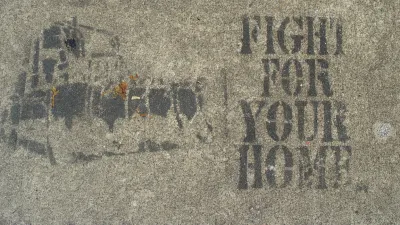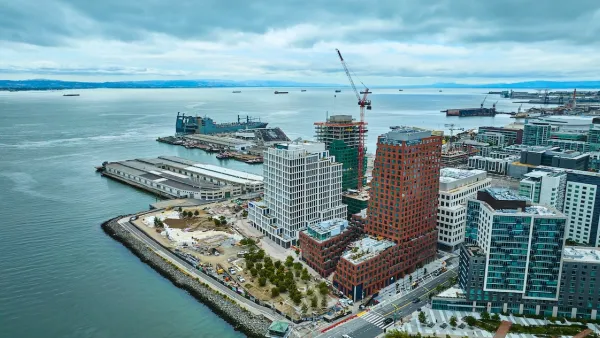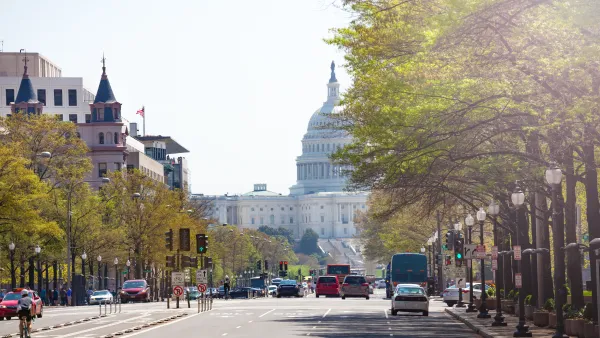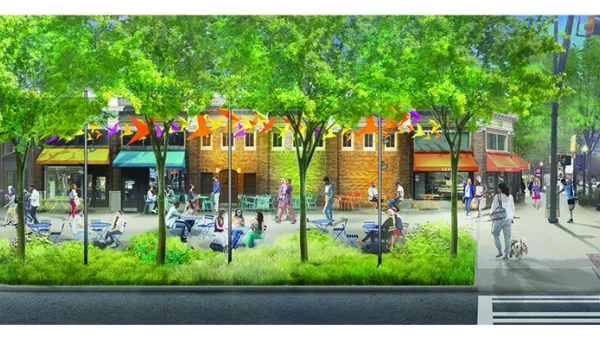The concept of the flâneur was created in the 19th century in response to the encroaching speed and efficiency of the Industrial Age. Can the flâneur now fashion a political response to the Age of the Automobile?

Planetizen blogger Steven Snell launches a new column at Fast Forward Weekly with an urbanist think piece that pits the city of the ambling flâneur against the city of the automobile. The article serves as a call for spatial justice.
First Snell exemplifies the flâneur’s politics by describing the tradition of taking a turtle for a walk. “By taking a turtle for a walk, a flâner disassembles the boring, rational use of urban space; the act avoids the intended logic of the city, which is an outcome of a certain ideology and the period’s political practices. The practices of the flâneur soon became translated into the concept of having a ‘right to the city,’ a theory of spatial justice. And theories in turn prescribed novel, concrete practices to take back the city from the oppressive and discriminatory constructions of modernist city planning.”
Contrast that with the legacy of much 20th century planning and development. “Although the automobile was supposed to be the ultimate form of modernity — individualism, the efficiency of point-to-point convenience — it’s led to urban sprawl (along with psychological, environmental and health implications). It’s led to big-box stores, drive-through coffee shops and ATMs, dispersed communities with often ironic names. It’s led to a city designed around its bullish behaviours. The logic of city planning for the single occupancy vehicle has led to oppressive spaces, spatial injustice.”
Snell points to acts of tactical urbanism and collective action as examples that the world is ready for the flâneur to recover the spaces of the city.
FULL STORY: Taking a turtle for a walk

Analysis: Cybertruck Fatality Rate Far Exceeds That of Ford Pinto
The Tesla Cybertruck was recalled seven times last year.

National Parks Layoffs Will Cause Communities to Lose Billions
Thousands of essential park workers were laid off this week, just before the busy spring break season.

Retro-silient?: America’s First “Eco-burb,” The Woodlands Turns 50
A master-planned community north of Houston offers lessons on green infrastructure and resilient design, but falls short of its founder’s lofty affordability and walkability goals.

Test News Post 1
This is a summary

Analysis: Cybertruck Fatality Rate Far Exceeds That of Ford Pinto
The Tesla Cybertruck was recalled seven times last year.

Test News Headline 46
Test for the image on the front page.
Urban Design for Planners 1: Software Tools
This six-course series explores essential urban design concepts using open source software and equips planners with the tools they need to participate fully in the urban design process.
Planning for Universal Design
Learn the tools for implementing Universal Design in planning regulations.
EMC Planning Group, Inc.
Planetizen
Planetizen
Mpact (formerly Rail~Volution)
Great Falls Development Authority, Inc.
HUDs Office of Policy Development and Research
NYU Wagner Graduate School of Public Service




























